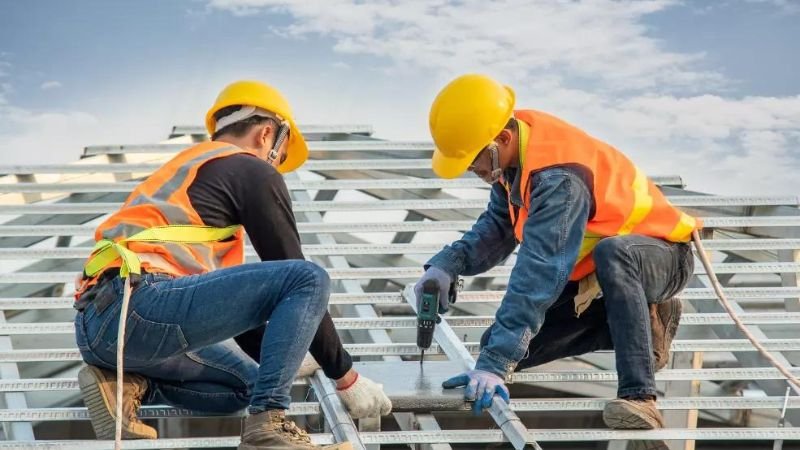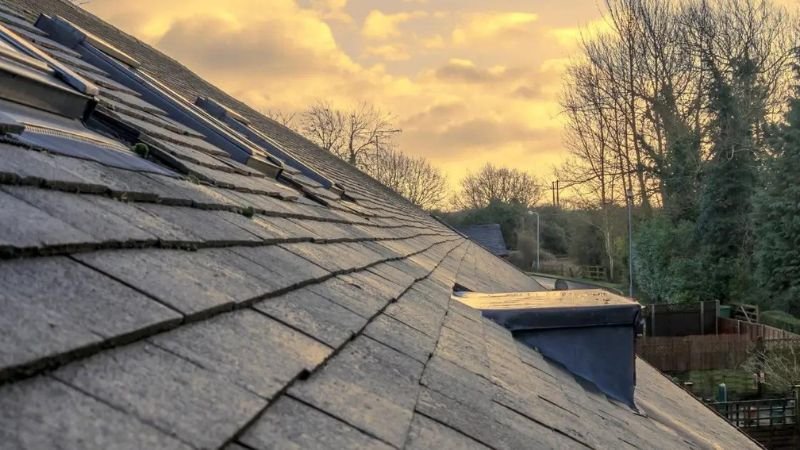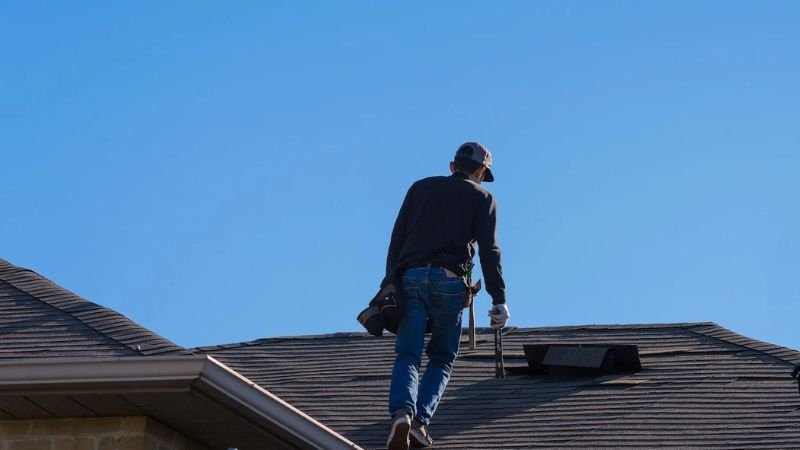Upkeep of your roof is essential to maintaining the lifetime and structural integrity of your house. Regular upkeep not only ensures safety and comfort but also prevents costly repairs down the road. In this guide, we provide you with the top 9 roof maintenance tips every homeowner should know. Whether you’re dealing with shingles, tiles, or metal roofing, these practical tips will help you extend the life of your roof and protect your investment. From simple inspections to seasonal maintenance tasks, we cover everything you need to keep your roof in optimal condition year-round. Follow our expert advice and safeguard your home from leaks, damage, and unexpected expenses.
Top 9 Roof Maintenance Tips For Homeowner
1. Regular Inspections
Effective maintenance starts with routine roof inspections. Schedule inspections at least twice a year—typically in the spring and fall—when weather conditions are mild. Begin by examining the roof surface for any visible signs of damage, such as missing or loose shingles, cracked tiles, or deteriorating flashing around chimneys, vents, and skylights. Use binoculars if necessary to inspect from the ground, or consider hiring a professional roofer for a more thorough assessment. Inside your home, check ceilings and walls for water stains, which can indicate roof leaks. Promptly addressing minor issues discovered during inspections can prevent them from escalating into costly repairs later on.
Also, Read – 10 Advantages And Disadvantages Of Pitched Roof
2. Clean Gutters and Downspouts
Clogged gutters and downspouts can cause water to accumulate on your roof, leading to potential water damage and even structural issues. Regularly clean gutters and downspouts, especially after storms or during the fall when leaves and debris are prevalent. Use a sturdy ladder and gloves to remove debris by hand, and flush gutters with a hose to ensure proper drainage. Check that gutters are securely attached to the roofline and that downspouts direct water away from the foundation to prevent water from pooling near the home.
3. Trim Overhanging Branches
Overhanging branches can pose a threat to your roof’s integrity, especially during storms when strong winds can cause them to rub against shingles or tiles, leading to abrasion and potential damage. Trim back any branches that hang over or near the roof to a safe distance—typically a minimum of 6 feet away—to prevent them from scratching or puncturing roofing materials. This simple maintenance task not only protects your roof but also reduces the risk of falling debris that could damage the roof during severe weather events.
4. Remove Debris
Regularly remove debris such as leaves, twigs, and dirt from your roof’s surface. Accumulated debris can trap moisture, promote mold and algae growth, and accelerate roof deterioration. Use a roof rake, soft-bristled broom, or leaf blower to safely clear debris, taking care not to damage shingles or tiles. Pay attention to valleys and other areas where debris tends to accumulate, as these areas are more prone to water pooling and potential leaks. Keeping your roof clean ensures proper water drainage and prevents unnecessary wear and tear on roofing materials.
Also, Read – Top 7 Roofing Trends For Modern Homes In 2024
5. Check and Maintain Seals and Caulking
Inspect seals and caulking around roof penetrations such as vents, chimneys, skylights, and dormers regularly. Over time, seals can deteriorate due to exposure to weather elements, leading to cracks or gaps that allow water to penetrate the roof structure. Replace old or damaged caulking with a high-quality sealant to maintain a watertight barrier and prevent leaks. Properly sealed penetrations protect vulnerable areas of your roof from moisture intrusion and contribute to the overall longevity of your roof.
6. Address Moss and Algae Growth
Moss, algae, and lichen can compromise the integrity of your roof by trapping moisture and causing shingle or tile deterioration over time. Remove moss and algae promptly using a brush or gentle pressure washing technique. Avoid using harsh chemicals or high-pressure washing, as these methods can damage roofing materials. Consider installing zinc or copper strips along the roof ridge to inhibit future growth of moss and algae. Maintaining a clean and algae-free roof not only improves curb appeal but also enhances the roof’s ability to shed water and withstand weather elements effectively.
7. Repair or Replace Damaged Shingles/Tiles
Inspect your roof regularly for damaged or missing shingles, tiles, or shakes. Damaged roofing materials can compromise the roof’s ability to shed water and protect underlying layers from moisture damage. Replace any cracked, broken, or missing shingles promptly to prevent water infiltration and potential structural issues. When replacing roofing materials, ensure they match the existing roof color and style to maintain aesthetic consistency and preserve the overall curb appeal of your home. Addressing roof repairs promptly can prolong the lifespan of your roof and prevent more extensive and costly repairs in the future.
8. Ensure Proper Ventilation
Temperature and moisture levels under the roof must be controlled, and this requires adequate attic ventilation. Inadequate ventilation can lead to excessive heat buildup in the summer and condensation in the winter, both of which can cause damage to roofing materials, insulation, and even structural components of the roof. Install roof vents, soffit vents, or ridge vents to promote airflow and allow heat and moisture to escape from the attic space. Proper ventilation helps prevent moisture buildup, reduces the risk of mold and mildew growth, and prolongs the lifespan of your roof and attic insulation.
9. Schedule Professional Inspections
While regular homeowner inspections are essential, enlist the expertise of a professional roofer for comprehensive inspections at least once every few years, or as recommended by a roofing expert. Professional roof inspections provide a more in-depth assessment of your roof’s condition, identifying hidden issues that may not be visible during routine inspections. A professional roofer can detect early signs of roof damage, assess the overall integrity of roofing materials, and recommend necessary maintenance or repairs to extend the lifespan of your roof. Schedule professional inspections after severe weather events, such as hurricanes or hailstorms, or if you suspect roof damage due to age or environmental factors. Professional roof maintenance ensures that your roof remains in optimal condition, protecting your home and family from the elements for years to come.
Conclusion
Regular roof maintenance is key to protecting your home from weather damage and preserving its value. By following these 9 essential tips, you can prolong the life of your roof and avoid costly repairs. Remember, proactive care pays off—whether it’s clearing debris, inspecting for damage, or scheduling professional inspections. Take the time to invest in your roof’s upkeep, and you’ll reap the benefits of a secure and durable home for years to come. Stay ahead of potential issues with our expert advice and ensure your roof remains a reliable shield against the elements.
FAQs
What should I do if I find a roof leak?
Immediately address roof leaks by locating the source and temporarily stopping water entry with a patch or bucket. Contact a professional roofer for a permanent fix.
How often should I inspect my roof?
It’s recommended to inspect your roof twice a year, ideally in the spring and fall. Additionally, check after severe weather events like storms or heavy snowfall.



